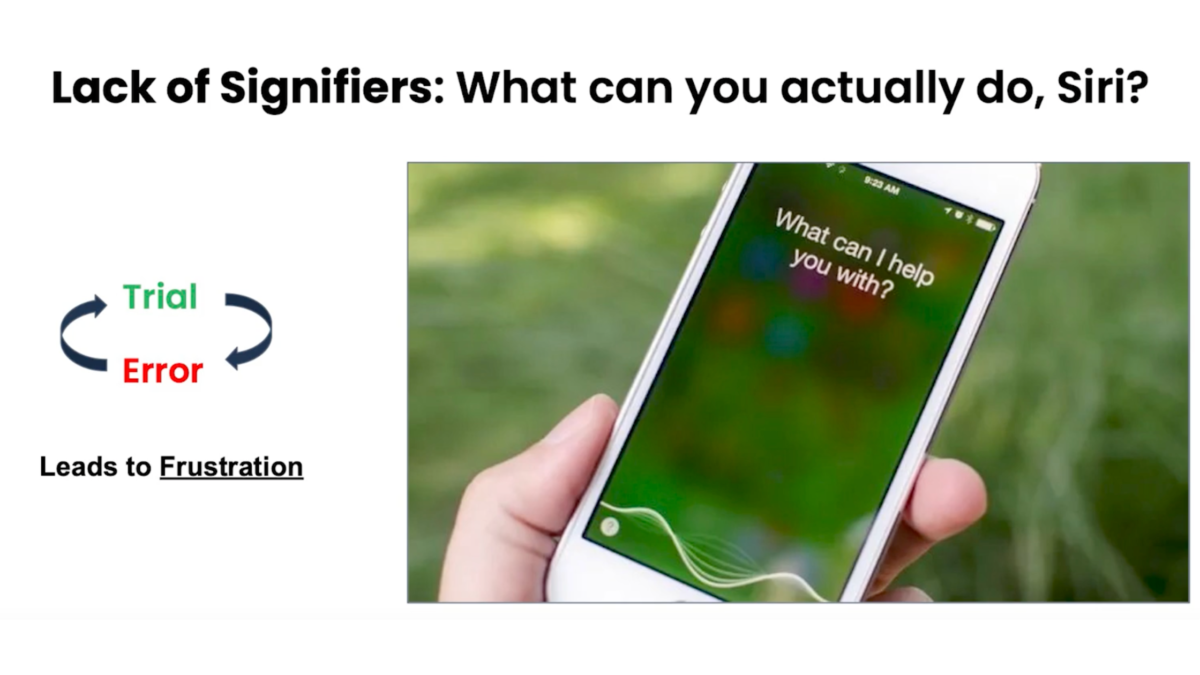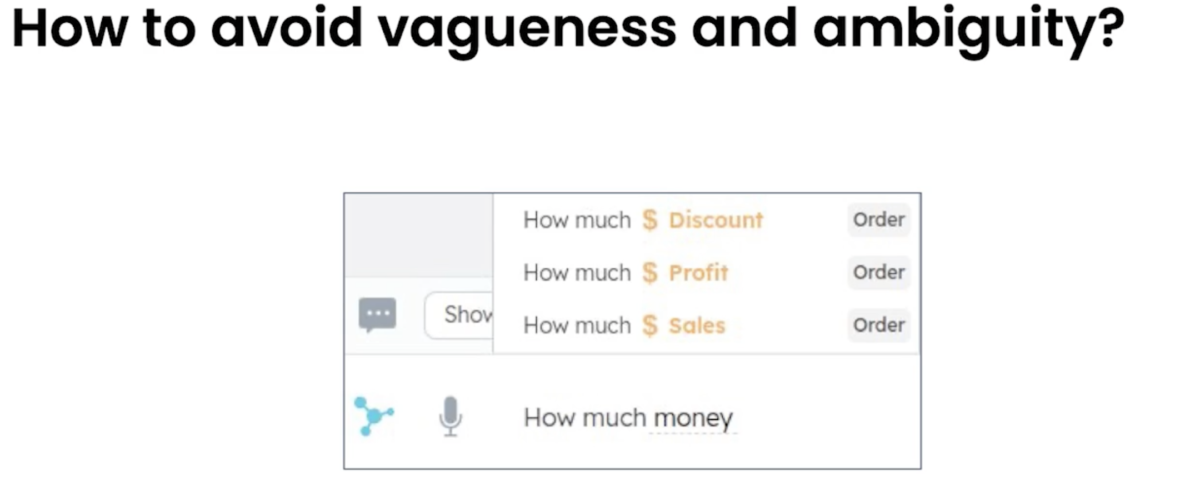Decoding AI: A Transparent Take on Real-world Solutions and Stubborn Stumbling Blocks
This post is based on a speech that our CTO JP Monteiro recently gave at the Digital-Shift. We discuss the cons of AI for creating smooth UX.

One of the biggest hurdles for data management is one we’ve all experienced: trying to sift through abundant data and extract timely, actionable insights from it, often feeling like we need an extra degree just to make sense of it all. That’s the precise challenge that sparked Veezoo into existence.
Veezoo had (and still has) a simple yet transformative purpose: ensuring every individual, regardless of their technical prowess, could easily interact with their data, extracting insights without getting entwined in the complexities.
And we did this by leveraging AI. Today Veezoo can easily answer queries like “How were our sales of premium Swiss chocolates to American customers last quarter?” without any of the usual wrestling with filters and charts. Instead, we have a ChatGPT-like interface that facilitates dialogue between user queries and data analysis, propelling us into a new era of user-friendly data conversations.
So, it’s safe to say that we are huge fans of leveraging AI here at Veezoo. But today, we’d like to talk about the other side – AI’s Imperfections.
Deep Dive into The Challenges of AI: Illuminating Real-Life Scenarios and Learnings
AI, while transformative, grapples with the ambiguity of language. So while it’s incredibly well-trained, in its present form, it is not quite ready for the non-tech user to depend fully on it.
This is especially true within varied business contexts, where AI often requires a nuanced understanding of terms like “revenue” across different models and policies. The accuracy, relevance, and insightfulness of responses are pivotal, demanding meticulous training and optimization of AI—a resource-intensive task. Furthermore, maintaining impeccable data quality and integrity is crucial to avoid misleading outputs – striking a balance between automated and human intervention remains vital.
UX Experiences and The Siri Paradigm:
When intertwining Artificial Intelligence with user experiences, especially in the realm of Self-Service Analytics, there’s a delicate balance that needs to be struck between automation and user-friendly interaction.
Consider Siri, Apple’s voice-activated assistant, where an intriguing issue surfaces – the absence of traditional user interface (UI) elements, or what we refer to as ‘signifiers’. Siri listens and responds but lacks visible buttons or sliders that guide user interaction, sometimes making its use less intuitive than traditional, button-filled screens. The lack of physical cues or signifiers about what actions are possible, or how to trigger them, might impede smooth interaction, even as the technology strives to streamline it.

Without visible filters, sliders, or buttons to guide the conversation or frame responses, interactions can become clouded, possibly leading to misconceptions or vague answers. In a domain where clear, precise interaction is paramount, the absence of these signifiers may hamper the full realization of AI’s communicative potential.
How we Tackle This at Veezoo:
At Veezoo, we don’t merely integrate AI; we interweave it with user-centric design principles. Our platform takes into consideration the necessity for clear, visual signifiers, ensuring users are not left in a conversational void, but rather, are guided through a well-signposted interaction journey. By maintaining a tangible and intuitive interface, we aim to marry the advanced capabilities of AI with the clear, directive utility of traditional UI elements.
Thus, even as Veezoo’s users engage in natural language dialogues with our UI, visible cues and options remain to guide, clarify, and enhance their explorative data journey, ensuring a harmonious and user-friendly experience even as they delve deep into their data explorations. This conscious melding of intuitive design with intelligent, automated interaction ensures that our users can navigate their data analytics journey with clarity, precision, and ease, enhancing the overall user experience and efficacy of their analytical explorations.

The Precision Dilemma in Natural Language Processing:
Embracing natural, easy-going conversations with AI, like asking “How did we do last quarter?”, certainly has its charm. But language by nature is vague.
Casual questions could throw a curveball at AI. Sure, the conversation feels light and breezy, but the lack of precision? That’s where the AI scratches its virtual head, wondering: “Do they mean revenue, sales, or perhaps customer acquisition?”
This is where AI must encourage users to refine their inquiries, without making them tap dance through technical jargon or stick to a rigid query format. A subtle coax towards precision, while keeping the chat easy and stress-free, is the goal.
How we Tackle This at Veezoo:
When questions are ambiguous, Veezoo asks further questions like: “Did you mean revenue from last quarter?”, offering options to guide the user towards a clear, concise answer, ensuring the data provided hits the mark, and keeps the conversational tone intact.
This further narrows down the room for error.

Trust and The Hallucination Problem:
Picture this: You ask your AI a straightforward question about your sales data and it hands you a fabricated answer. That little fictitious moment, that’s a trust-breaker. All the faith you had in the tool is gone in seconds as your boss calls out your mistakes in a meeting.
But it’s a pretty common problem with AI.
We all know about ChatGPT’s hallucination problem where it might, unintentionally, weave an inventive answer that’s not grounded in real data. This is where trust begins to crumble, eroded by every unintentional misstep into imaginative data realms.
How we Tackle This at Veezoo:
We don’t fancy our AI making stuff up. At Veezoo, we’re adamant about sticking to the script – the real, verified data script, that is. At Veezoo we aren’t interpreting your results. We are simply getting you the data that you need and can use to power all your insights.

Safeguarding Against Misinterpretation of Data With AI
Imagine a scenario: you ask your AI, “Show me customers with 10+ badges,” and it promptly displays data, affirming your query. But what if that data never existed? The internet is full of examples like this, where AI has validated nonexistent data, showcasing the risky trajectory of unchecked responses.
At Veezoo, safeguarding against such missteps is pivotal. If a user requests data beyond our database, we don’t fabricate or validate nonexistent info. Instead, we transparently communicate the data absence, preserving not only our user’s trust but also the steadfast integrity of our information. It’s not merely about providing answers but ensuring those answers are rooted in verifiable, accurate data.
In this way, Veezoo doesn’t just protect data accuracy – it shields the trust users place in our system, ensuring every interaction enhances their confidence in our platform.
The Road Ahead
Navigating the riveting journey of artificial intelligence, the tech community stands at a crossroads, where the potential of technology meets the wisdom obtained from past experiences. It’s been a path of discovery, entwining innovative breakthroughs with intrinsic challenges, crafting a narrative that is as insightful as it is instructive.
Our road ahead is like a vibrant tapestry, continuously being woven with the threads of newfound knowledge and exploration in the AI sphere, ensuring our journey is ever-evolving.


